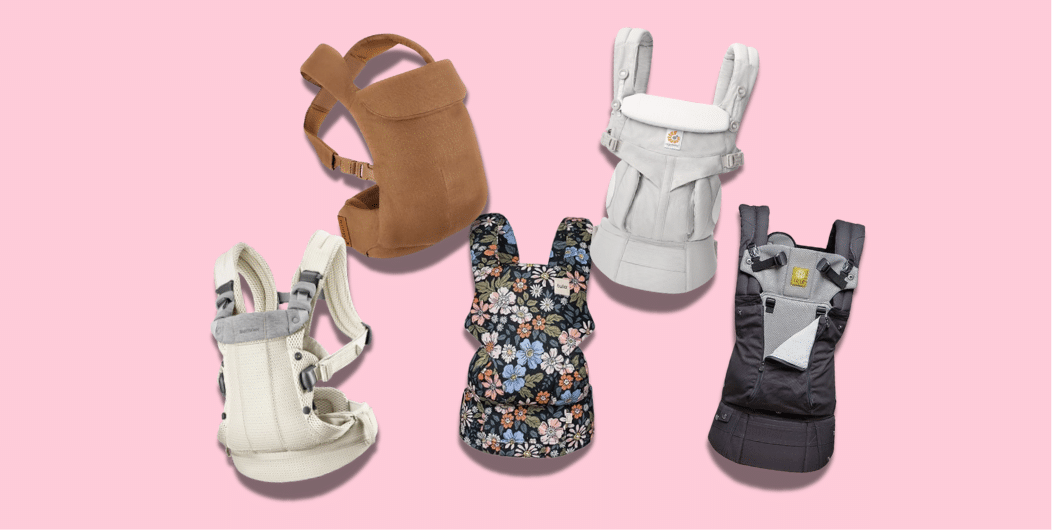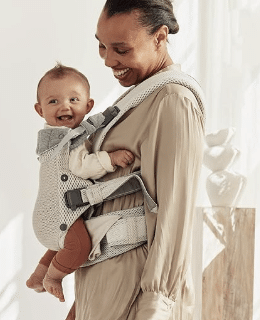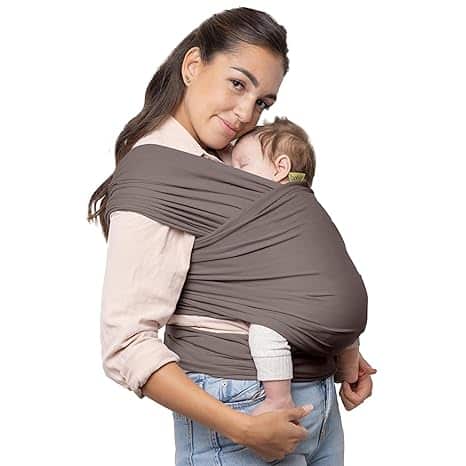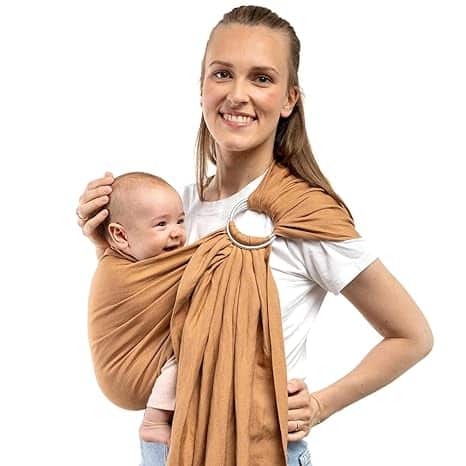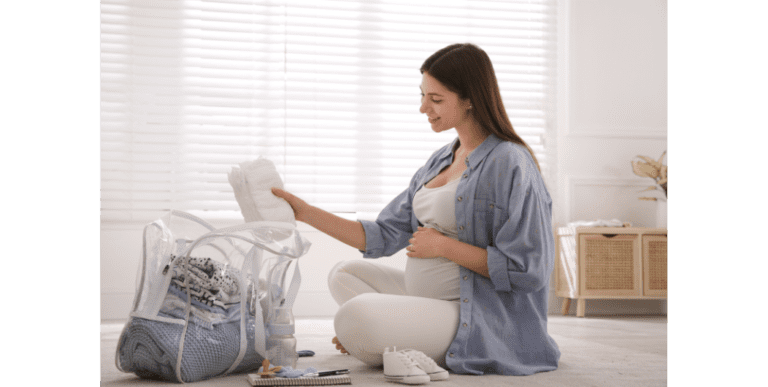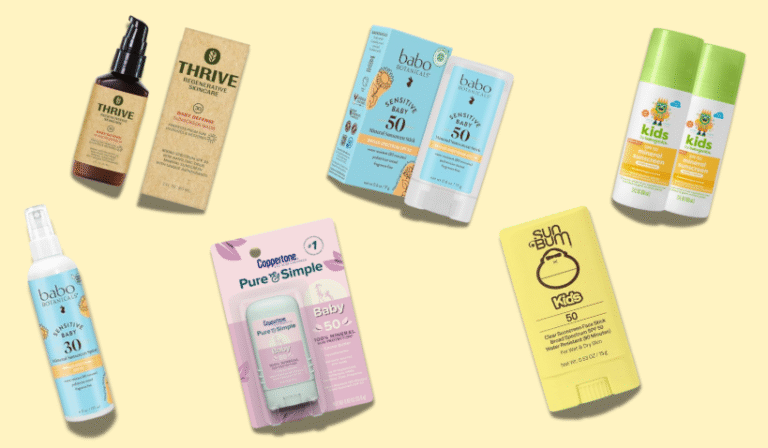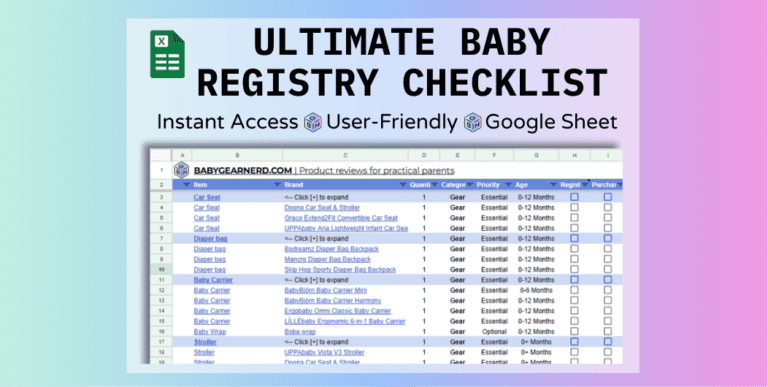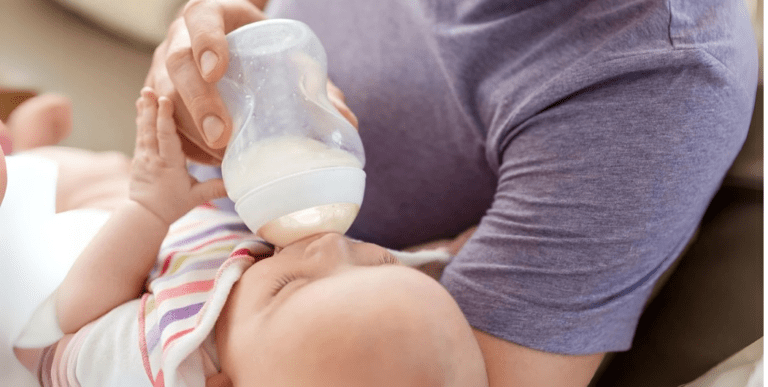The 5 Best Baby Carriers of 2025: A Must-Have for New Parents
If you’re reading this, you probably already know you need a baby carrier and you might be in search of the best baby carrier for your registry. Let’s take a look at the best baby carriers that help us free our hands of a baby that DOES NOT want to be put down!

When Would You Actually Use a Baby Carrier?
- 🚶♀️➡️ Going for walks or hikes with your newborn
- 🙌 To free your hands if baby doesn’t want to be put down
- 😴 To encourage baby to nap
- ✈️ During air travel
The 3 Types of Baby Carriers
There are 3 main types, but as a minimalist, you only really need one structured carrier that is designed to accommodate newborn to toddler weight (usually 7-40 lbs).
1. Structured Carriers
These are the most popular style and what most people think of when it comes to carriers. They include padded shoulder straps, buckles, and adjustable settings for fit and comfort. They’re ideal for longer outings and because they offer better back support.
2. Wrap Carriers
Wraps are long pieces of fabric that are tied and knotted around the parent’s body to secure the baby. They take a bit of practice to master but offer an incredibly snug and customizable fit, perfect for newborns.
3. Ring Slings
Like a wrap, but secures the fabric using a ring and drapes over one shoulder.
However, ring slings have low ratings on amazon, and are frequently returned.
The major downside to wraps and ring slings are that they have a learning curve and if you don’t learn how to use it properly, it could be dangerous for your baby.
The truth is, you’ll only use what you feel comfortable using. So that precludes carriers that require you to watch 4 youtube videos and 30 minutes of practice to figure out.
This post will focus on structured carriers only.
What Makes it the Best Baby Carrier?
I’ve tried quite a few carriers and they are definitely NOT created equal. Some gave me back pain after just a short time, but in others, I could carry my baby for the whole day.
- Good Weight Distribution: A great carrier places most of the weight on your hips instead of your shoulders and back.
- Comfortable: Padded straps, breathable materials, and ergonomic design make a difference.
- Easy to use: Can you put it on by yourself? Adjust quickly? These factors matter, especially when your baby is crying!
- Looks nice: You’ll be wearing it a lot—make it something that fits your style, rather than ‘that dreaded awful ugly thing’.
- Versatile: Look for multiple carry positions, from front-inward to back carry and ease of switching from one mode to another. HOWEVER, even functionality sounds cool, in reality, you won’t be switching modes very much!
- Accessories: Sunshades, pockets, drool pads, and machine-washable fabrics all come in handy.
The Best Baby Carriers of 2025 – Full List
Let’s take a look at our list of best baby carriers.
- Best overall: Babybjorn
- Best all-rounder: Ergobaby
- Best back support: LILLEbaby
- Best natural materials: Wildbird
- Best selection of designs: Tula
1. BabyBjörn Carrier Harmony

Highlight: Sleek design, many pretty colors to choose from, easy to use and reliable, with premium comfort and support.
- Pros:
- High-end feel and materials
- Comes in a variety of nice colors
- Supportive head and neck padding
- Stylish
- Easy for anyone to use
- Cons:
- Slightly pricey
- No built-in sun shade
2. Ergobaby Omni 360 All-Position Carrier

Highlight: Another super popular all-in-one carrier supports side wearing, has a built in sunshade in addition to lumbar support.
- Pros:
- Ergonomic design with hip-safe positioning
- Good amount of support
- Built in sunshade
- Cons:
- Bulky
- Takes time to adjust all straps
- Less aesthetic
3. LILLEbaby Complete All Seasons Carrier

Highlight: Known for back support and versatility, this carrier offers six carrying positions. Back support is provided via an extra padded panel at the back.
I did also use this one, after hearing from someone with twins that it was really comfortable. It is indeed, comfortable, but it is also bulky, not that good looking (the design I chose), and the color faded over time.
I was drawn in by the “6 carrying positions”, and was impressed when I saw a lady on youtube change this from a front to back carry WITH the baby inside. HOWEVER, in reality, I didn’t have to change modes that often at all, which is good because switching from front to rear-facing was a real PITA! This is due to the extra lumbar padding that gives it the ‘comfort’. This padding needs to be removed to switch to forward facing mode, which requires too many steps (and sweat).
- Pros:
- Zip-down mesh panel for ventilation (but the panel annoyingly hangs out when not in use)
- The neck support can attach to the shoulder strap, creating a secure and supportive head support for sleeping babies
- Built-in sunshade (actually super useful)
- Excellent lumbar support
- Cons:
- Not as intuitive to adjust
- Can feel stiff at first
- Less aesthetic
4. WildBird Aerial Carrier
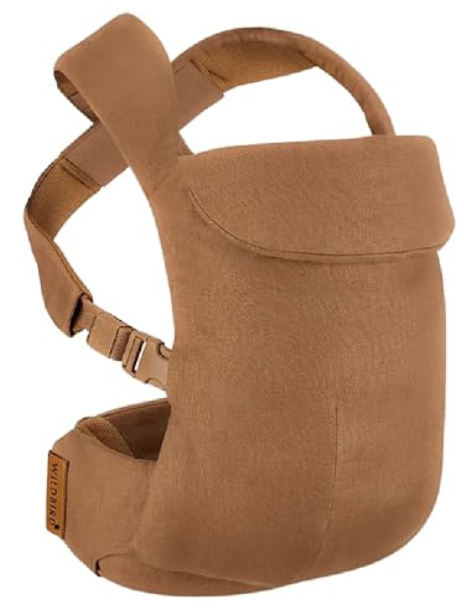
Highlight: Beautiful, made of 100% European linen, easy-to-use, and versatile!
- Pros:
- Lightweight and compact
- Lovely neutral colors
- Easy to use
- Cons:
- Pricey
- No built-in sun shade
5. Baby Tula Explore Mesh Baby Carrier

Highlight: Available in pretty and unique prints. The design is similar to Lillebaby
- Pros:
- Good lumbar support, more padding around the waist
- Easy to use
- Mesh fabric all over for breathability for warmer climes
- Cons:
- Very expensive considering the design is the same as Lillebaby’s, which are half the price
- Doesn’t have built-in sun shade
Final Thoughts
Honestly, you may need more than one carrier – one to keep in the car, and one for the house, in which case you can try out a couple of the best baby carriers to see which one you like.
Don’t be swayed by more bells and whistles – simple is safest and best.
I also wanted to make a note about hip dysplasia. If you are reading this, you have probably come across this term, which is something that could potentially be caused by a carrier with a seat that is too narrow, resulting in the child’s legs hanging straight down.
There is a lot of awareness of this these days, so most reputable carriers on the market are certified by the Hip dysplasia institute or designed to provide a wider seat.
Let me know which ones you chose in the comments!

